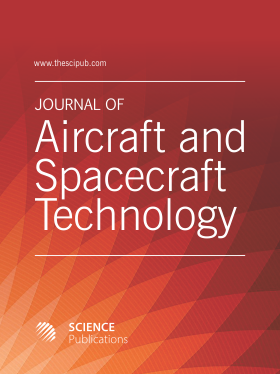Nasa Selects Concepts for a New Mission to Titan, the Moon of Saturn
- 1 Bucharest Polytechnic University, Romania
- 2 Second University of Naples, Italy
Abstract
Nasa just has selected two new concepts for some new robotic missions, one of which aims to explore potential landing sites on Saturn’s largest moon, Titan. This first concept is named Dragonfly, which is a drone-like rotorcraft that would use the environment on Titan to fly to a number of locations to sample materials and determine surface composition to examine Titan’s organic chemistry and habitability. It also intends to monitor atmospheric and surface conditions as well as image landforms to evaluate geological processes and perform seismic studies. Titanium (or Saturn VI) is Saturn's largest satellite. This is the only known natural satellite that has a dense atmosphere and the only heavenly body, other than the Earth, for which there is clear evidence that it has a liquid surface and an atmosphere. Although the atmosphere on Titan does not seem to be similar to that of our planet, even at first sight very unfriendly, the fact that it exists, there is still a very important fact in our solar system, still a heavenly body with the atmosphere which urges us to start a serious research of this interesting heavenly body quickly. Titan is Saturn's sixth spheroidal satellite. Often described as a satellite-planet, Titan is about 50% larger than the Moon, the Earth's satellite and is 80% more massive. This is the second largest satellite in the Solar System, after Ganymede, Jupiter's satellite and is larger in volume than the smallest planet in the Solar System, Mercury, though only half as mass. The gravitational acceleration from the surface (0.14g) is slightly lower than the monthly one (0.17g). Titan was Saturn's first known satellite, discovered in 1655 by Dutch astronomer Christiaan Huygens and was the fifth satellite of a planet other than Earth that was discovered by humans. Titanium is mainly made of ice and rock water. As with Venus before the space era, the dense and opaque atmosphere prevented the study of Titan's surface. At present, there is enough information about the surface of the satellite since the arrival of the Cassini-Huygens mission in 2004, which also found liquid hydrocarbon varnishes in the polar regions of the satellite. The surface is geologically young, but several impact craters have also been discovered. The surface contains more mountains and a few possible crioviers, but is generally smooth. There are sand dunes in the equator, where the "sand" consists of ice. Titan's atmosphere is largely composed of nitrogen in gaseous form; other minor components leading to the formation of methane and ethane clouds and nitrogen-rich organic smog. Climate change, including wind and rain, creates features similar to those of the Earth's surface, such as sand dunes, rivers, lakes, seas (probably methane and liquid) and delta and is dominated by seasonal weather patterns similar to on Earth. With its liquids (both surface and underground) and the robust nitrogen atmosphere, the methane cycle on Titan is considered to be similar to the cycle of water on Earth, but at a much lower temperature.
DOI: https://doi.org/10.3844/jastsp.2018.40.52

- 9,474 Views
- 4,230 Downloads
- 27 Citations
Download
Keywords
- NASA
- Robotic Missions
- Titan
- Organic Chemistry
